Intel Core i7-10700 vs Core i7-10700K Review: Is 65W Comet Lake an Option?
by Dr. Ian Cutress on January 21, 2021 10:30 AM EST- Posted in
- CPUs
- Intel
- Core i7
- Z490
- 10th Gen Core
- Comet Lake
- i7-10700K
- i7-10700
CPU Tests: Legacy and Web
In order to gather data to compare with older benchmarks, we are still keeping a number of tests under our ‘legacy’ section. This includes all the former major versions of CineBench (R15, R11.5, R10) as well as x264 HD 3.0 and the first very naïve version of 3DPM v2.1. We won’t be transferring the data over from the old testing into Bench, otherwise it would be populated with 200 CPUs with only one data point, so it will fill up as we test more CPUs like the others.
The other section here is our web tests.
Web Tests: Kraken, Octane, and Speedometer
Benchmarking using web tools is always a bit difficult. Browsers change almost daily, and the way the web is used changes even quicker. While there is some scope for advanced computational based benchmarks, most users care about responsiveness, which requires a strong back-end to work quickly to provide on the front-end. The benchmarks we chose for our web tests are essentially industry standards – at least once upon a time.
It should be noted that for each test, the browser is closed and re-opened a new with a fresh cache. We use a fixed Chromium version for our tests with the update capabilities removed to ensure consistency.
Mozilla Kraken 1.1
Kraken is a 2010 benchmark from Mozilla and does a series of JavaScript tests. These tests are a little more involved than previous tests, looking at artificial intelligence, audio manipulation, image manipulation, json parsing, and cryptographic functions. The benchmark starts with an initial download of data for the audio and imaging, and then runs through 10 times giving a timed result.
We loop through the 10-run test four times (so that’s a total of 40 runs), and average the four end-results. The result is given as time to complete the test, and we’re reaching a slow asymptotic limit with regards the highest IPC processors.

Google Octane 2.0
Our second test is also JavaScript based, but uses a lot more variation of newer JS techniques, such as object-oriented programming, kernel simulation, object creation/destruction, garbage collection, array manipulations, compiler latency and code execution.
Octane was developed after the discontinuation of other tests, with the goal of being more web-like than previous tests. It has been a popular benchmark, making it an obvious target for optimizations in the JavaScript engines. Ultimately it was retired in early 2017 due to this, although it is still widely used as a tool to determine general CPU performance in a number of web tasks.
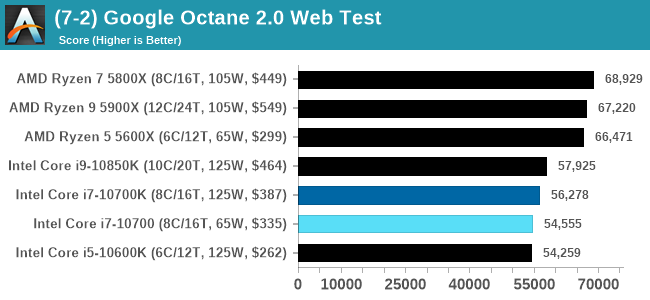
Speedometer 2: JavaScript Frameworks
Our newest web test is Speedometer 2, which is a test over a series of JavaScript frameworks to do three simple things: built a list, enable each item in the list, and remove the list. All the frameworks implement the same visual cues, but obviously apply them from different coding angles.
Our test goes through the list of frameworks, and produces a final score indicative of ‘rpm’, one of the benchmarks internal metrics.
We repeat over the benchmark for a dozen loops, taking the average of the last five.
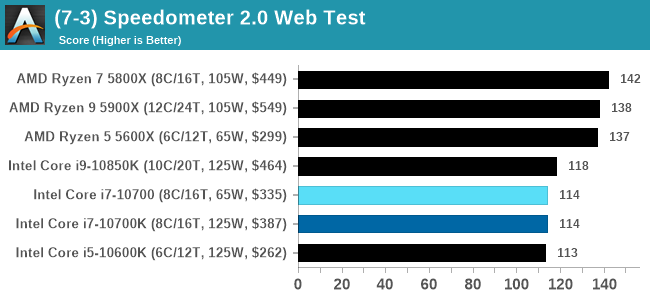
Legacy Tests
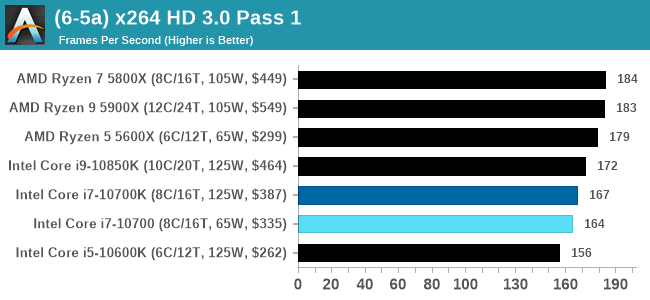
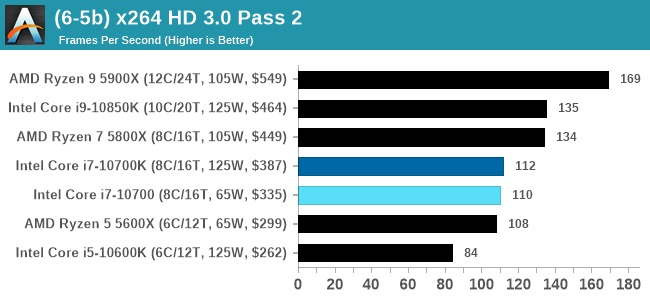
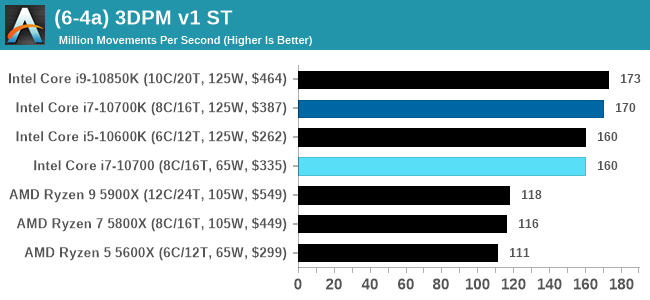
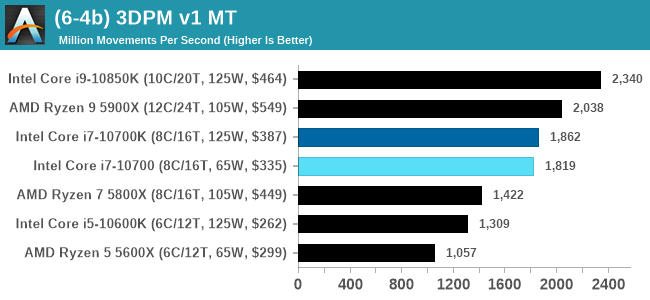
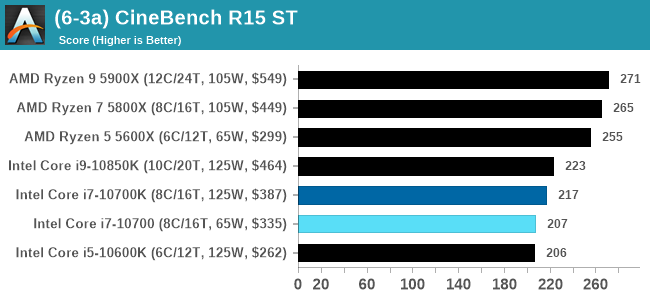
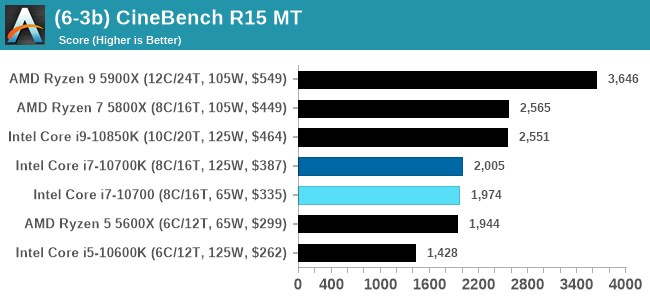


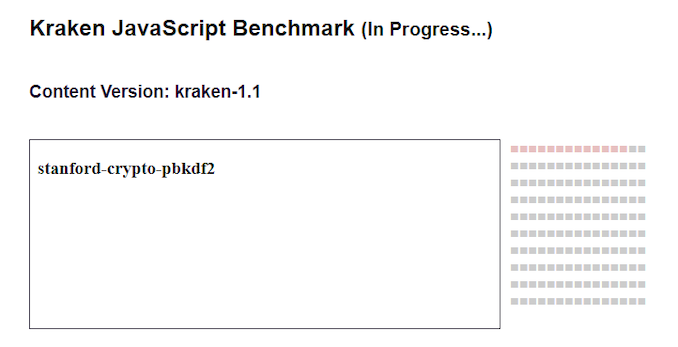
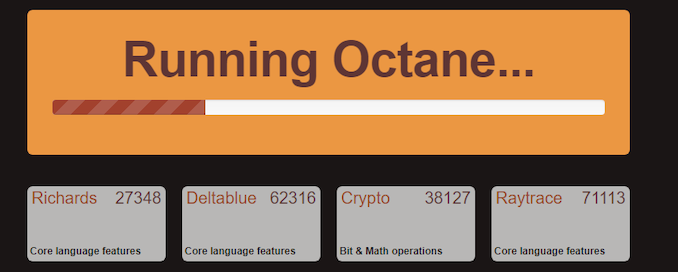
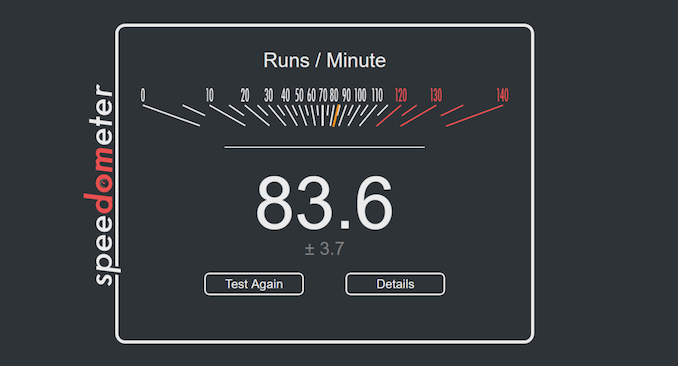








210 Comments
View All Comments
quiq - Sunday, January 24, 2021 - link
I would have liked them to test the processors in addition to the heatsink that comes in the retail box, that would provide a sample of how the product behaves that an end user obtains when buying it. Obviously the use of a heatsink from a 3rd party manufacturer improves the performance of both due to the superior ability to eliminate heat, which helps to maintain the turbo frequencies for longer in both processors.olde94 - Monday, January 25, 2021 - link
one thing i don't see is that the CPU is officially rated 2.9ghz. Not 4.0 as the graphs seems to suggest. We are getting 4.0 with propper cooling, but what i gave it a 90W cooler? Would i end up back at 2.9ghz? We all know that frequency and powerdraw is never a linear curve so we might see 25% lower powerformance at 1/3 the power draw and as such their claim about 65w could be true, but that it peaks if allowed to. I mean don't get me wrong, it's shitty, but is it really that wrong though?noxplague - Monday, January 25, 2021 - link
Dr. Cuttess, thank you as always for these in-depth analyses.I would really like to see how this compares with the previous 9th generation Intel parts (9900, 9700, 9600, etc). However in your bench tool the 2020 and 2019 tests make this difficult. Couldn’t the data be back ported or forward ported and just put N\A for tests that aren’t in both datasets?
I love then bench tool, but it’s recently hamstrung by not allowing for comparisons of 8th gen and 9th gen (and equivalent AMD parts)
Nesteros - Wednesday, January 27, 2021 - link
I was under the impression that TDP was the maximum amount of thermal energy, measured in watts, that a CPU would ever produce and would need to be “removed” by the thermal solution, not the amount of energy measured in watts that a CPU consumes. Surely a processor is not converting all of the power it consumes into heat, else it would be a very efficient space heater and not a CPU.Qasar - Thursday, January 28, 2021 - link
take a look at this :https://www.anandtech.com/show/13544/why-intel-pro...
simply put, intel bases its TDP at BASE clocks, with what they would consider default settings. AMD, bases its TDP, on, for the most part, max power draw. same value, WAY different view of what TDP is between them
Peter-fra - Saturday, February 13, 2021 - link
Dear Anandtech team, thanks a lot for this great clarification of the difference between K and non K Intel products. However, I would like to know what you think about these Geekbench multi-score results showing a gap of around 13% between the 10700 and 10700k on multi-core bench ?=> https://browser.geekbench.com/processor-benchmarks
Since the difference of all core turbo frequency between those 2 processor is around 2-3% (4.7Ghz vs 4.6Ghz) I cannot understand why there would be a 13% gap on this benchmark ?
Does it mean that the Geekbench aggregated data of the 10700 comes from OEM builds with entry level motherboard which doesn't maximize turbo (probably because the VRM are not great) and stay within the intel recommended turbo ?
Scour - Monday, February 15, 2021 - link
That´s the end of my 350W-PSUs :(stealth-katana - Friday, April 2, 2021 - link
The image with the text written with a sharpie on the CPU is making me cringe. 🤣briantim - Wednesday, September 8, 2021 - link
http://home.anandtech.com/show/16343/intel-core-i7...